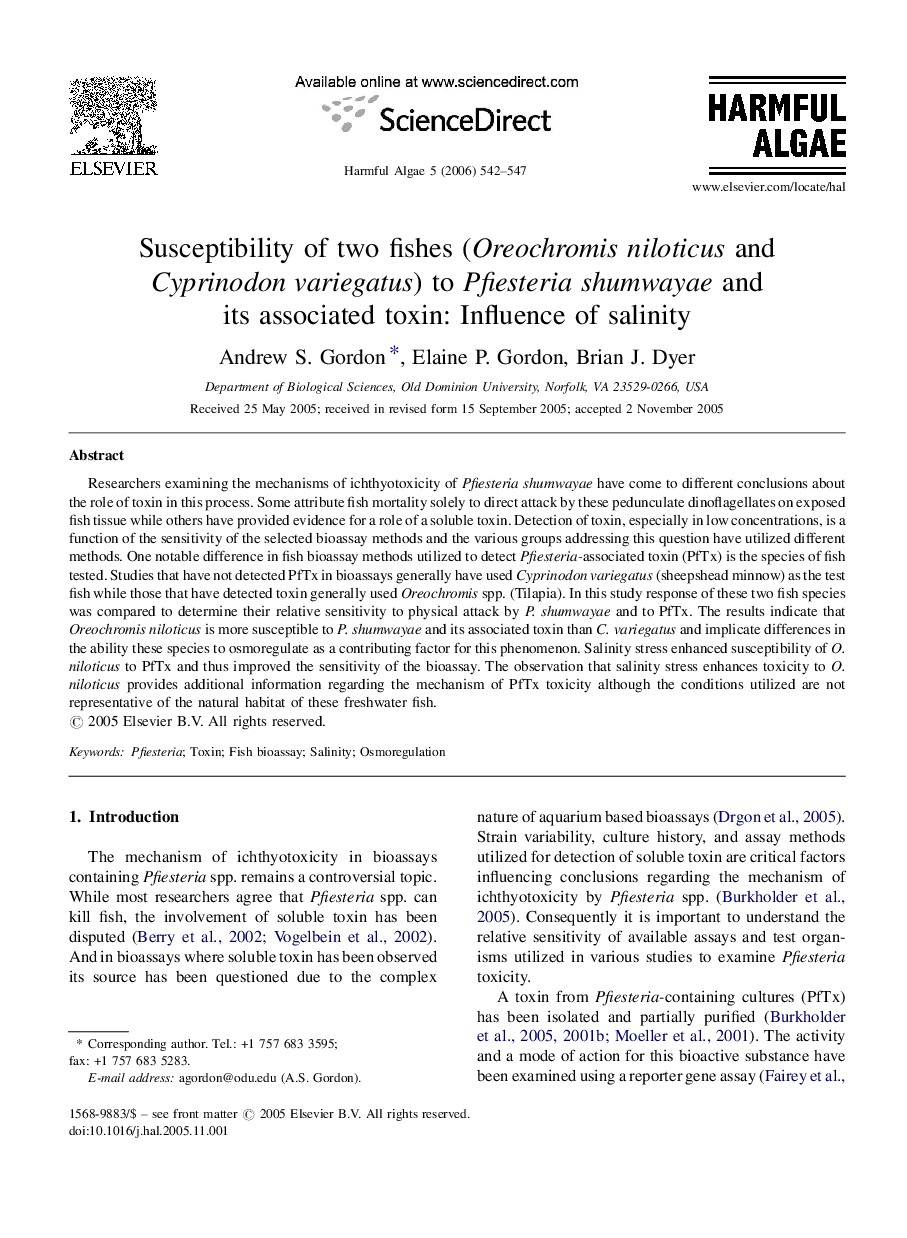| Article ID | Journal | Published Year | Pages | File Type |
|---|---|---|---|---|
| 4546294 | Harmful Algae | 2006 | 6 Pages |
Researchers examining the mechanisms of ichthyotoxicity of Pfiesteria shumwayae have come to different conclusions about the role of toxin in this process. Some attribute fish mortality solely to direct attack by these pedunculate dinoflagellates on exposed fish tissue while others have provided evidence for a role of a soluble toxin. Detection of toxin, especially in low concentrations, is a function of the sensitivity of the selected bioassay methods and the various groups addressing this question have utilized different methods. One notable difference in fish bioassay methods utilized to detect Pfiesteria-associated toxin (PfTx) is the species of fish tested. Studies that have not detected PfTx in bioassays generally have used Cyprinodon variegatus (sheepshead minnow) as the test fish while those that have detected toxin generally used Oreochromis spp. (Tilapia). In this study response of these two fish species was compared to determine their relative sensitivity to physical attack by P. shumwayae and to PfTx. The results indicate that Oreochromis niloticus is more susceptible to P. shumwayae and its associated toxin than C. variegatus and implicate differences in the ability these species to osmoregulate as a contributing factor for this phenomenon. Salinity stress enhanced susceptibility of O. niloticus to PfTx and thus improved the sensitivity of the bioassay. The observation that salinity stress enhances toxicity to O. niloticus provides additional information regarding the mechanism of PfTx toxicity although the conditions utilized are not representative of the natural habitat of these freshwater fish.
